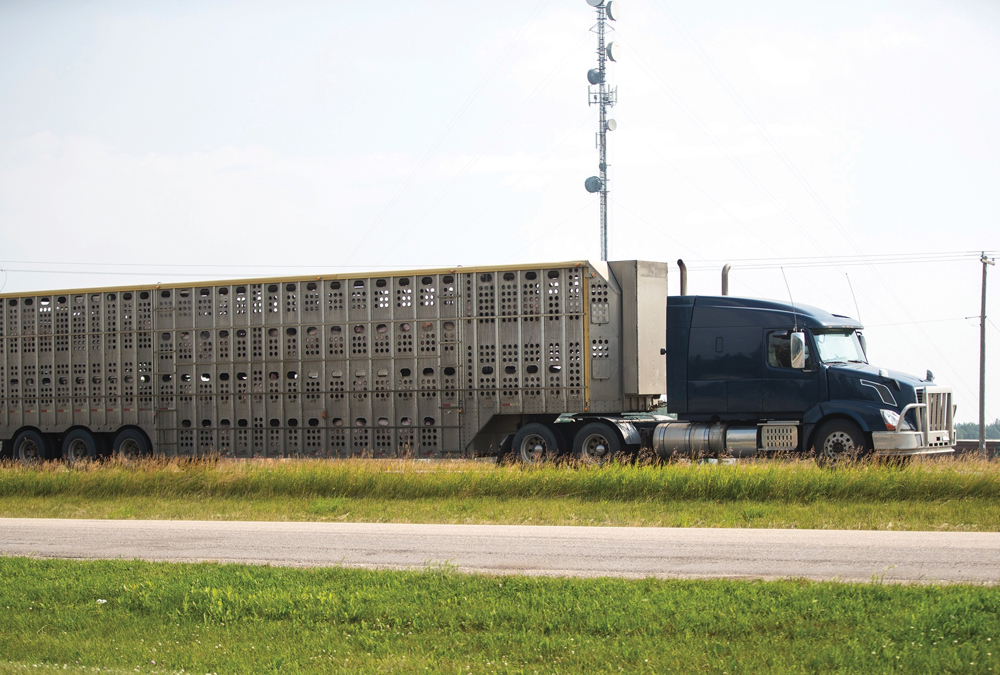The federal government’s amendments to the transport of animals regulations are causing controversy among cattle producers.
The new rules were introduced Feb. 20 and are scheduled to take effect in February 2020.
Why it matters: Cattle producers and truckers will have to adhere to new transportation regulations that may be premature, affecting animals and producers’ bottom lines.
The main issue is that the number of consecutive hours cattle can be transported without rest, feed and water will drop to 36 from the current 48 and the rest period will increase to eight hours from five.
Read Also

Farmers taking to social media to spread the word about the cost of farm thefts
A rash of farm thefts in Ontario have left farmers looking for new ways to help customers understand the cost of stealing goods.
“We’re disappointed the government didn’t recognize that it has partnered with industry on ongoing research that’s evaluating the stress of unloading and reloading cattle at a rest stop compared to finishing the journey,” said Brady Stadnicki, policy analyst for the Canadian Cattlemen’s Association (CCA).
While there is research indicating that cattle do experience stress during long haul trips, the current study, scheduled to be completed in 2021, is looking into how the cattle’s health is affected by having to make rest stops, as well as their optimal duration.
“We’re not sure if that’s prolonging the stress or if it’s adding benefit,” Stadnicki said. “We wanted to have the regulations introduced after the research is complete to inform cattle outcomes and best practices.”
The research is financed by Agriculture and Agri-Food Canada (AAFC), while the Canadian Food Inspection Agency (CFIA) (an arm of Health Canada) is responsible for the regulations.
“We’re aware of the study,” said Dr. Jaspinder Komal, Canada’s chief veterinary officer, adding that the results will be reviewed and considered in future revisions of the regulations.
“We’ve looked at all the research and there are 400 articles posted on the open government database.”
He said the CFIA also had to take into account international standards, and the practices currently used in Canada, but the central focus was the health and welfare of the animals, along with the geographic realities of this nation.
The regulations were last updated in 1977, and there have been extensive consultations with industry groups, animal welfare organizations and others around the new ones. Dr. Komal said the new regulations balance out the different interests.
Both Stadnicki and Dr. Komal agree that the industry, by and large, has a good reputation for transporting cattle.
Where they parted ways was in how much the industry is already adhering to the new rules. Dr. Komal said that 98 per cent of the industry is compliant. Stadnicki said that number includes all livestock — pigs and poultry as well as cattle.
The CCA contends that 99.9 per cent of cattle are reaching their destination injury-free, and the big changes being made under the amended regulations are not likely to improve on that number.
“We are not against looking at updating the regulations, and we’re always willing to look at how things can be modernized and updated,” Stadnicki said.
Adjustment made for industry concerns
Dr. Komal said that adjustments were made to the draft regulations to accommodate some of the industry’s concerns, especially in terms of changing the prescriptive nature of some of them to more outcome-based. As an example, he said that there are no prescribed materials for ramps, provided they have a non-slip surface.
He also said that the new rules exempt fully equipped trucks — that are ventilated and in which animals can be fed and watered — from the time restrictions. Basically, the animals on these specially made conveyances have to “benefit from the same conditions as animals not held in containers,” according to the regulation.
However, Stadnicki said that using them in a commercial setting is far away at this time.
The transportation time, though, is prescriptive, and Dr. Komal backed up the 36 hours by saying the CFIA analyzed the research and actually gave more time than other jurisdictions to include loading and offloading animals.
The United States has a maximum transport time of 28 hours, with extensions to 36 hours allowed by phone in extenuating circumstances, and the European standard is eight hours.
Managing quicker stops
Another industry issue is the facilities needed to accommodate the cattle at rest stops.
While most western cattle aren’t coming to Ontario feedlots, Stadnicki said about 350,000 cattle make the trip annually.
“It’s important that east-west trade in cattle continues and there’s concern that there needs to be increased capacity in Thunder Bay or elsewhere to take care of it,” he said, adding that the CCA raised this problem with the CFIA during the consultations.
As to the next steps for the CCA, Stadnicki said they will continue analyzing the revised regulations and engaging with the government before they come into effect next February.












